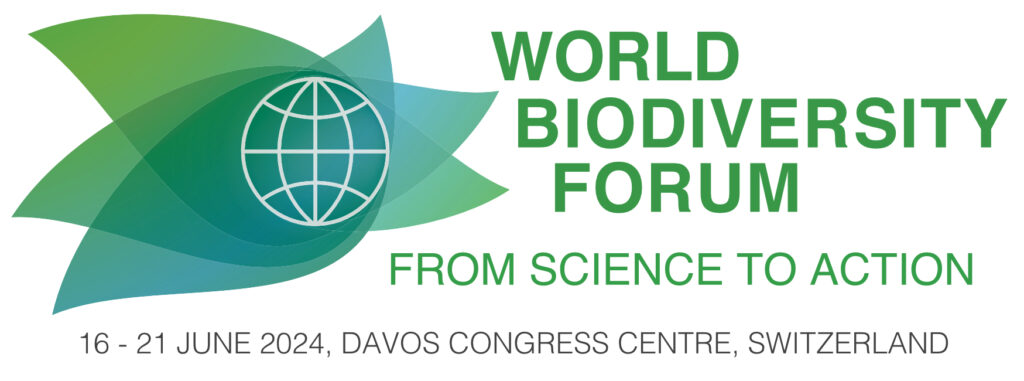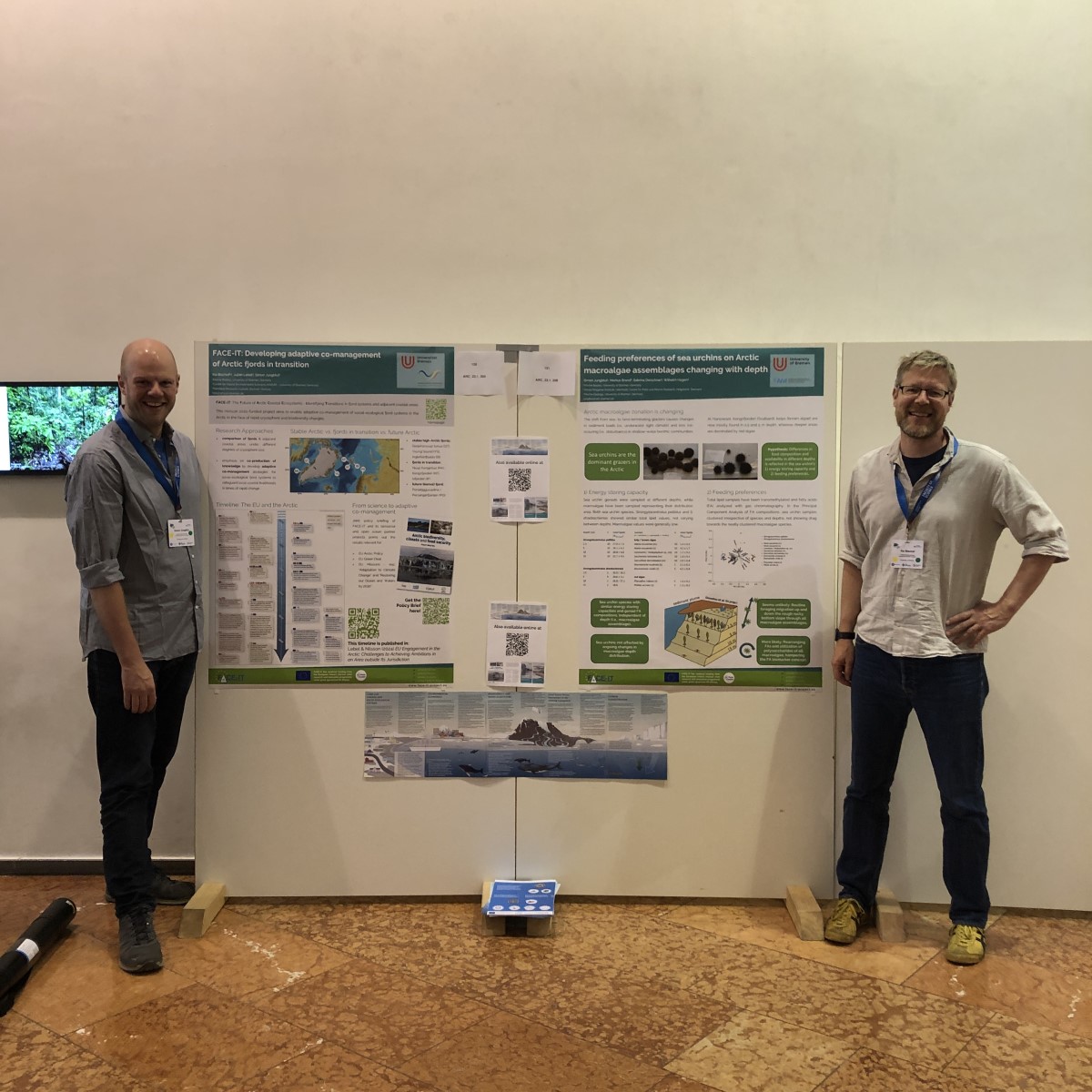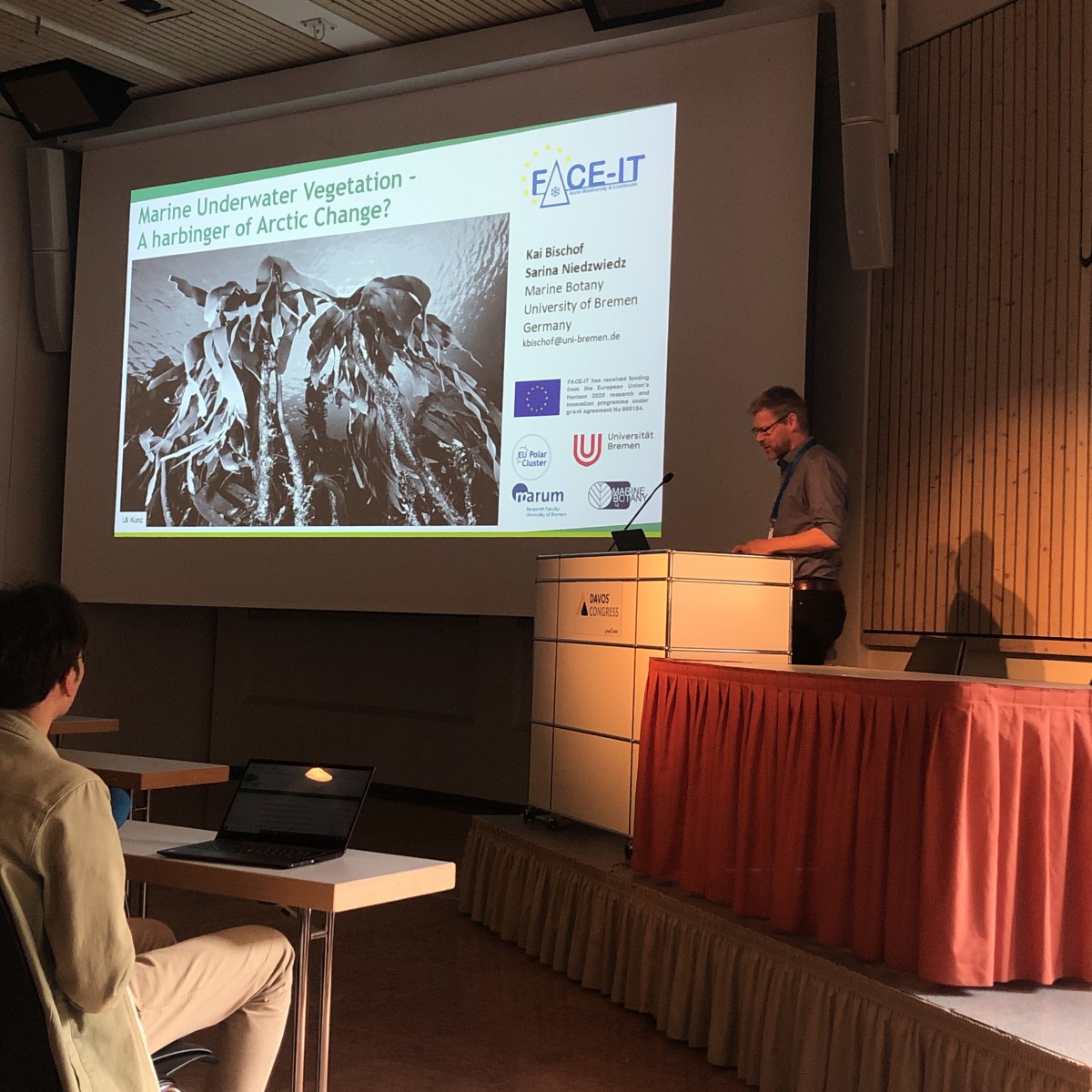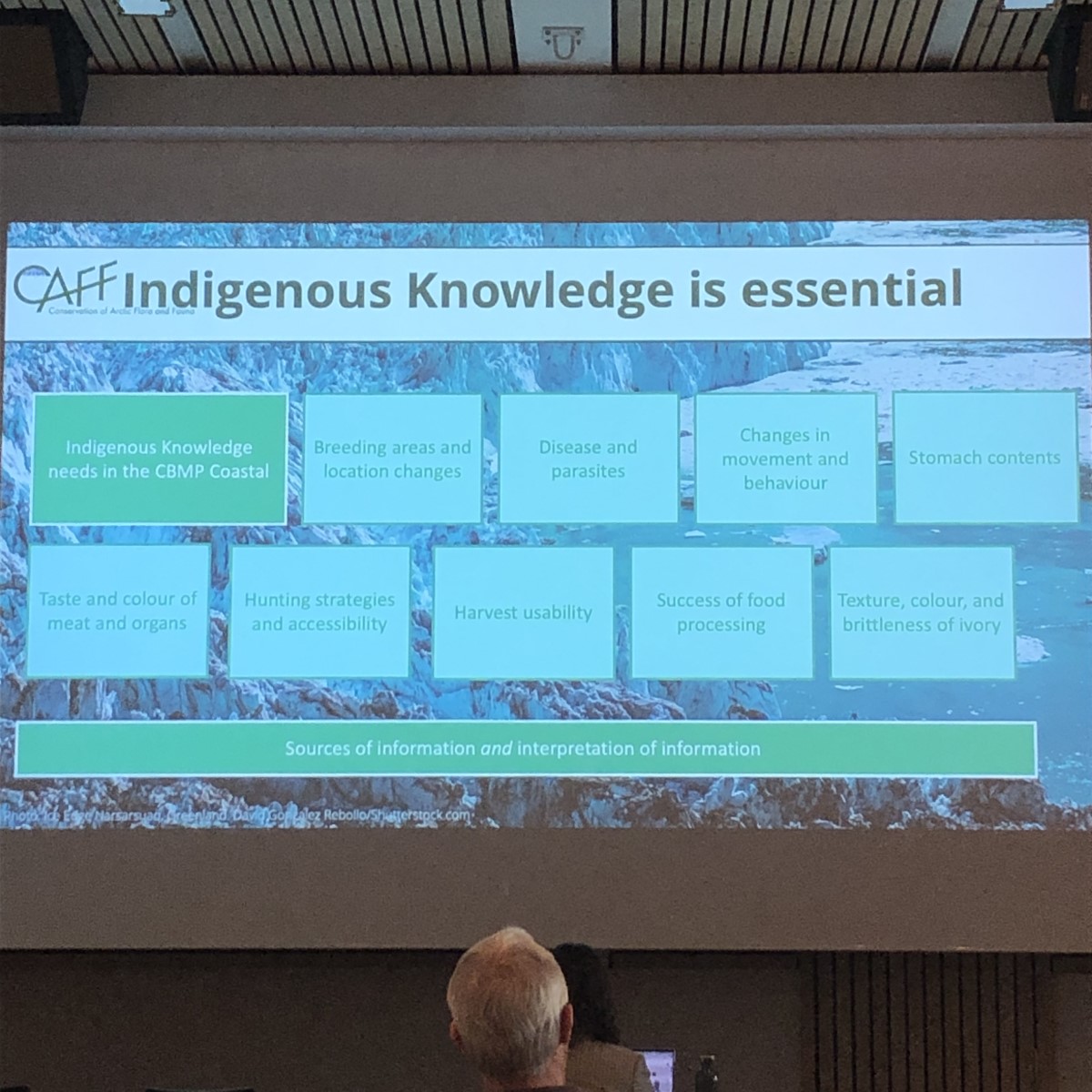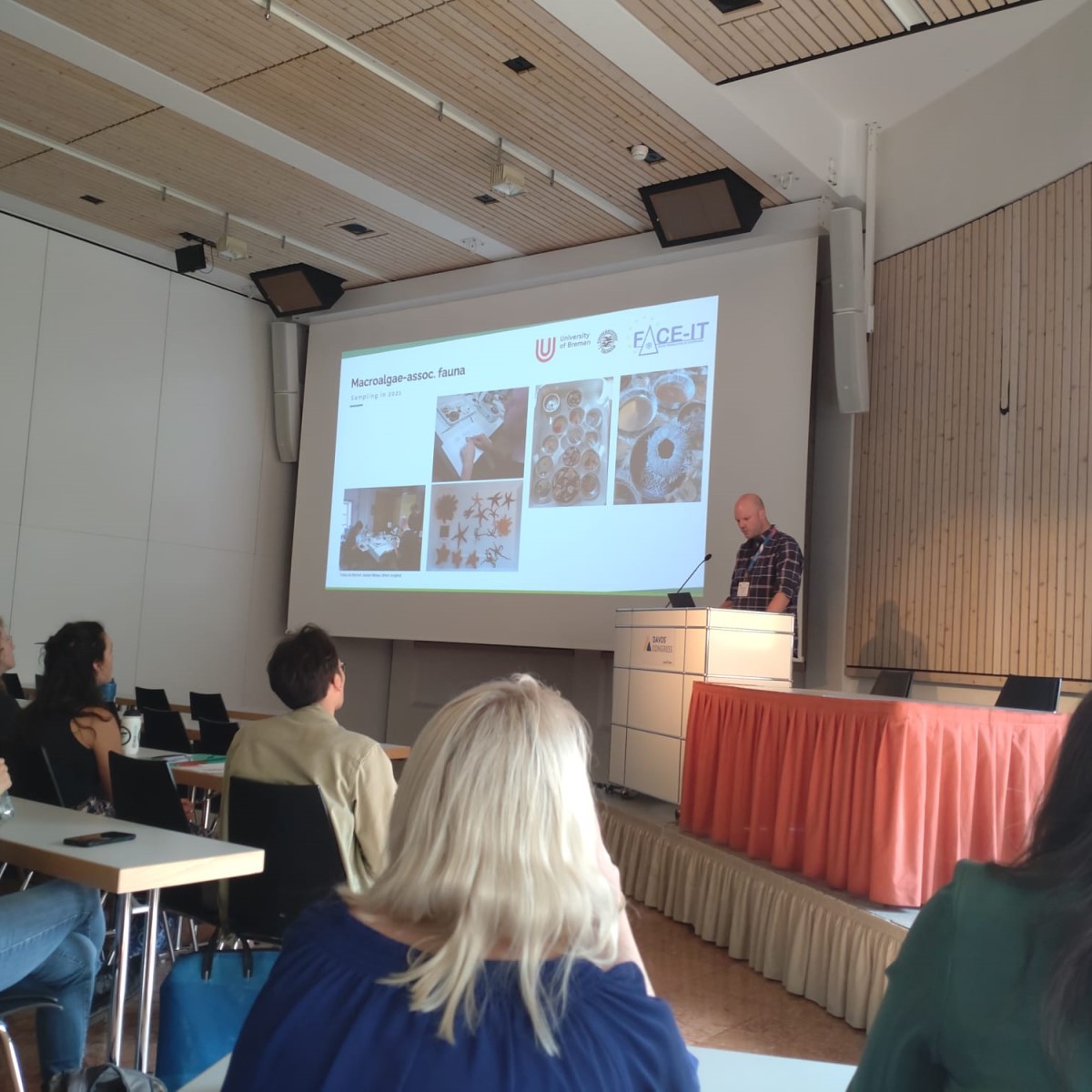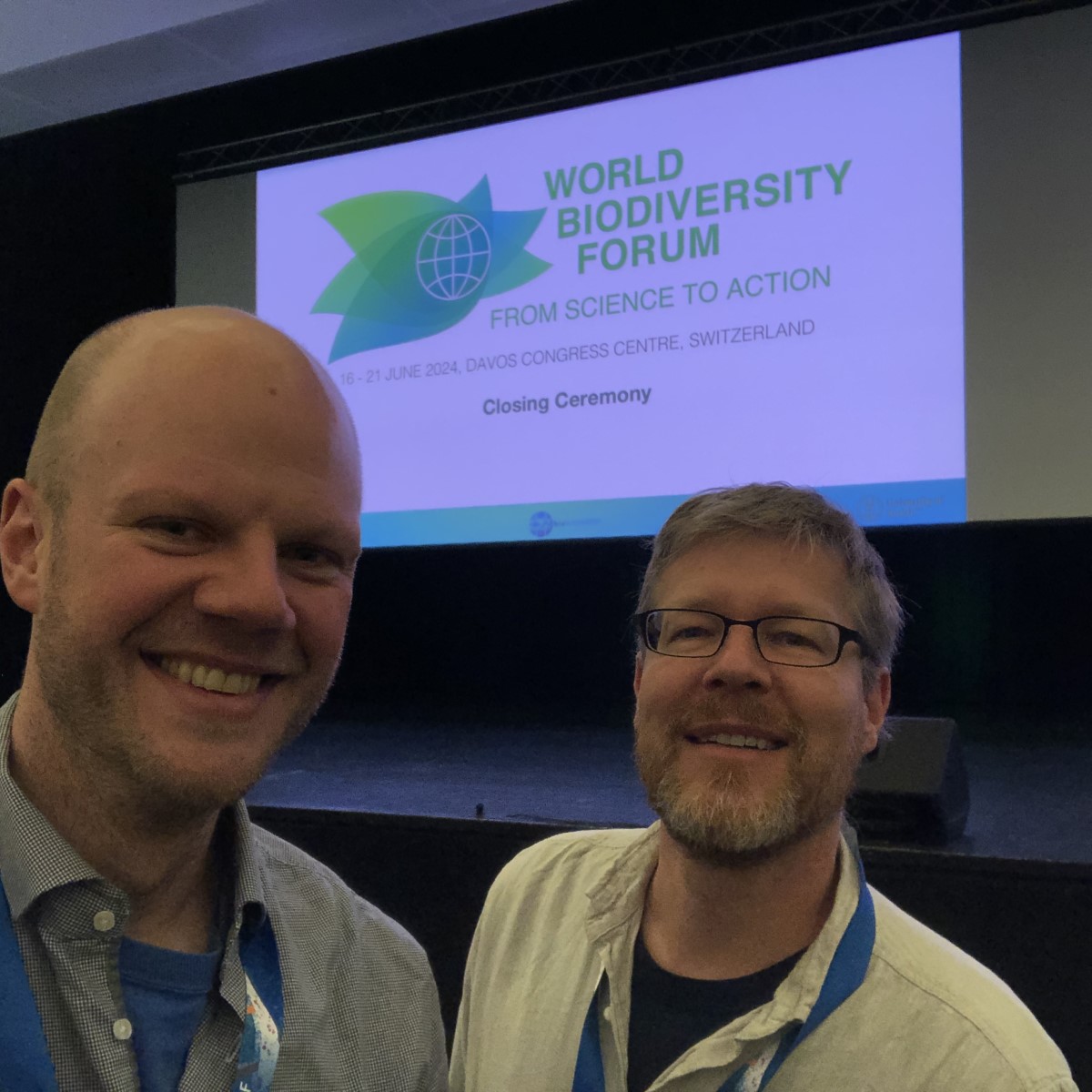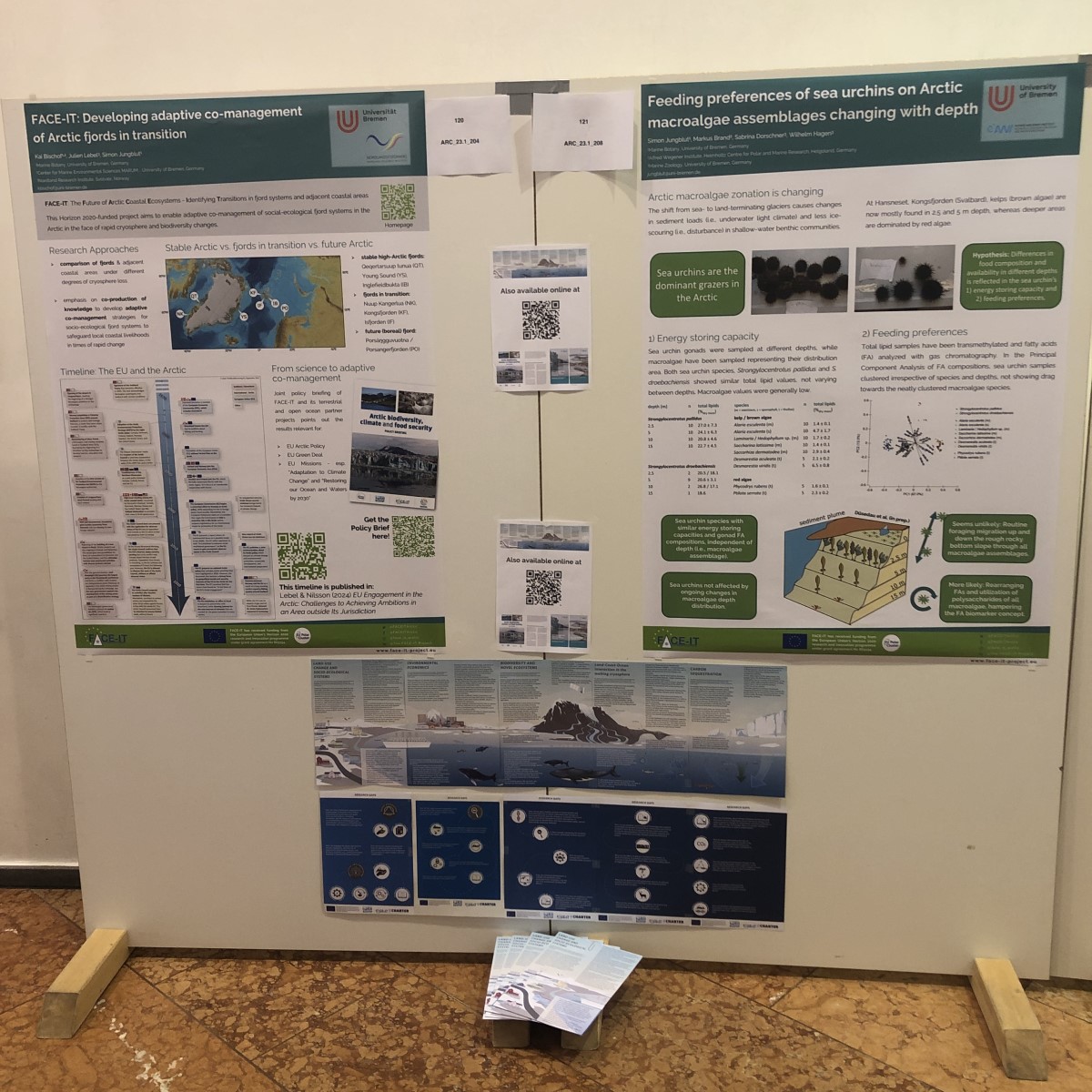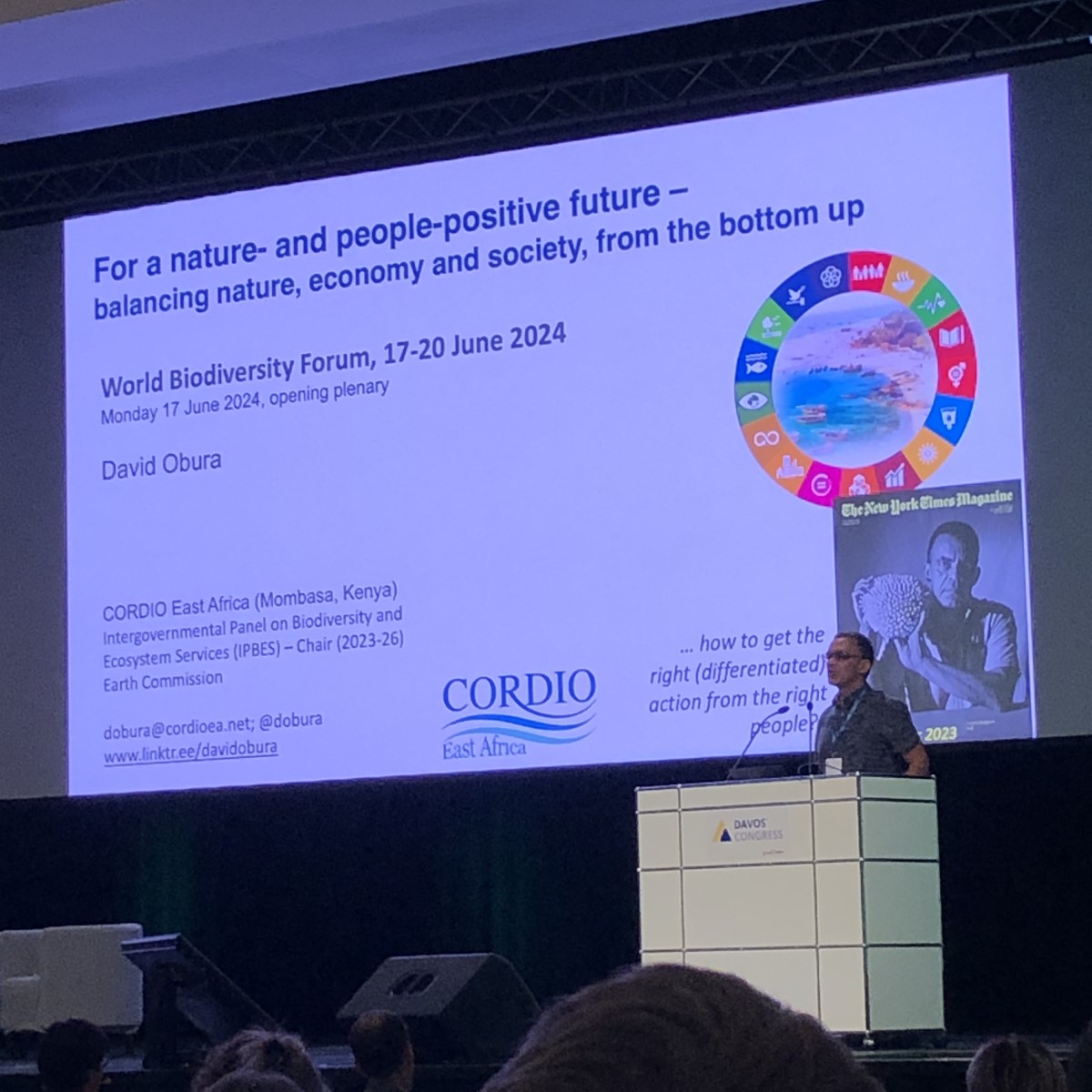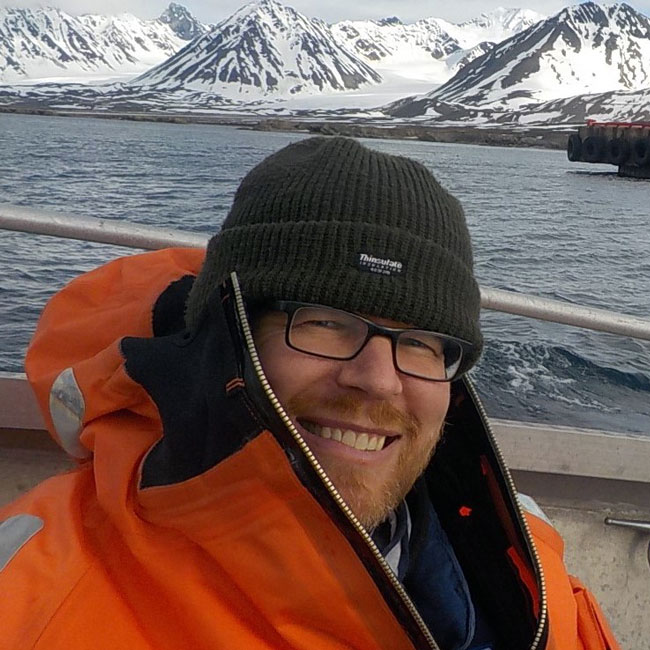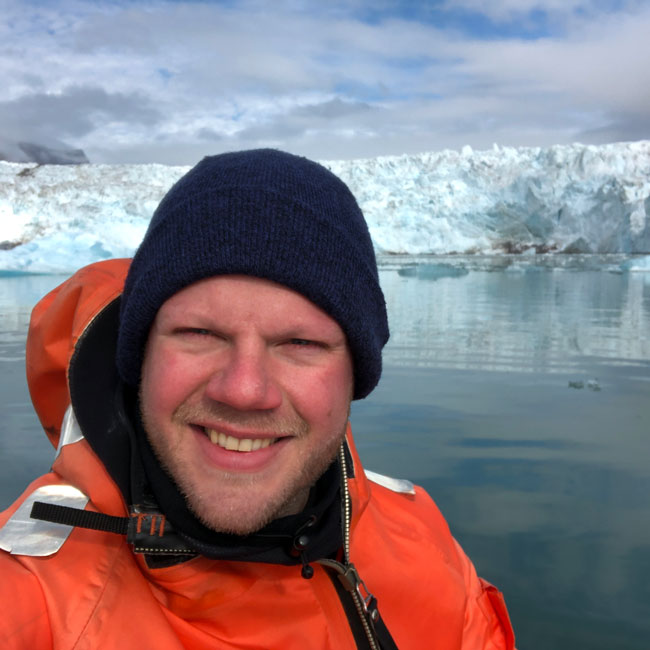FACE-IT contributions to the World Biodiversity Forum 2024 in Davos, Switzerland
17 to 21 June 2024
Kai Bischof and Simon Jungblut, the FACE-IT managing team from the University of Bremen, participated in the World Biodiversity Forum 2024, which was held in Davos, Switzerland, from 16 to 21 June 2024. Both presented a talk and a poster each in the only session dedicated to Arctic environments, entitled: “Understanding the role and destiny of Arctic Biodiversity in a changing world”. The session description and the presentation abstracts can be explored below.
Furthermore, Kai and Simon as well as Julia Olsen (Nord University) engaged in the workshop “Building pathways towards desirable futures for Arctic biodiversity– a design thinking workshop”, organized by colleagues from our partner project CHARTER. Check out the separate newspost!
Session description
ARC_23.1a Understanding the role and destiny of Arctic Biodiversity in a changing world
Global change is causing significant changes in Arctic ecosystems, posing a serious threat to Arctic biodiversity. As the pace of change is fast, it is essential to increase our knowledge regarding the role and destiny of Arctic biodiversity as an ecosystem component that experiences climate change and land use effects, but also as a factor influencing ecosystem health and stability.
This session aims therefore to bring together the latest study results, visions, and perspectives on the topic of Arctic biodiversity. Especially encouraged are contributions that address the effects of global change on Arctic biodiversity or showcase the importance of Arctic biodiversity for maintaining the stability and functioning of Arctic ecosystems and for supporting indigenous and local communities.
Conveners
Ramona Heim, Debora Obrist, and Vitalii Zemlianskii (University of Zurich)
Oral presentations
Marine underwater vegetation – A harbinger of Arctic change?
Kai Bischof (University of Bremen), Sarina Niedzwiedz (University of Bremen)
Seaweeds act as ecosystem engineers on many polar rocky shore coastlines. The underwater light climate and temperature are the main drivers for their vertical and latitudinal distribution. With temperatures rising globally, an Arctic expansion of temperate seaweed species is expected. Glacial melt might result in newly available substratum for settlement, but also in a deteriorating light climate as consequence of increasing terrestrial run off. Combining data from pan-Arctic time-series of seaweed community structure, underwater light climate in response to glacier influence and species eco-physiology sheds light on the fate of Arctic fjord ecosystem functioning modulated by globally and locally acting drivers of environmental change. We observed reduced light intensities and a changed spectral composition in glacial meltwater plumes, potentially resulting in an upward shift of the lower depth limit of seaweeds, counteracting the predicted biomass increase in the Arctic. Furthermore, we studied temperature-related changes in light-use characteristics in different seaweed species. Ultimately, temperature induced changes in seaweed light-use characteristics might lead to shifts in species composition, at the expense of the rather cold-adapted species. We conclude that the deterioration of the underwater light climate in combination with temperature increase may drive substantial changes of the future Arctic underwater forest.
Biodiversity changes of seaweed-associated fauna in Kongsfjorden, Svalbard
Simon Jungblut (University of Bremen), Jessica Niklass (The Arctic University of Norway, Tromsø, Norway), Markus. Brand (Alfred Wegener Institute, Helmholtz Centre for Polar and Marine Research), Christian Buschbaum (Alfred Wegener Institute, Helmholtz Centre for Polar and Marine Research), Martin Paar (University of Rostock, Germany), Inka Bartsch (Alfred Wegener Institute, Helmholtz Centre for Polar and Marine Research), Markus Molis (The Arctic University of Norway, Tromsø, Norway)
The marine physical environment of the Arctic is rapidly changing and entails dramatic decreases in sea-ice and a retreat of glaciers. Especially in coastal areas, this ongoing cryosphere loss has profound effects on shallow subtidal habitats and communities, including shifts in distribution of seaweed biomass and species composition along the depth gradient. The objective of this study was to assess whether and, if so, by how much biomass, total abundance, and taxon composition of the seaweed-associated fauna had changed concomitantly. In Kongsfjorden, Svalbard, the seaweed-associated fauna at Hansneset has been sampled at 2.5, 5, 10, and 15 m in 1996/98, 2012/13, and 2021. Taxonomic composition differed considerably between 1996/98 and 2012/13, while it remained similar to the latter in 2021. Taxonomic composition varied also with depth and this effect was independent on year of observation. The fauna biomass increased with depth between 2.5 and 15 m in 1996/98. Contrarily, it decreased with depth in 2012/13. In 2021, peak biomass was found at 5 m depth, while the remaining depths showed similar values of about 30-50% less. Overall, biomass and abundance of the seaweed-associated fauna increased about twofold, on average, between 2012/13 and 2021, returning to 1996/98 values. While mainly cirripeds caused this increase in biomass, the biomass of bryozoans decreased from 2012/13 to 2021.
Poster presentations
FACE-IT: Developing adaptive co-management of Arctic fjords in transition
Kai Bischof (University of Bremen), Julien Lebel (2Nordland Research Institute), Simon Jungblut (University of Bremen)
Arctic ice is melting, turning sea-terminated into land-terminated glaciers. This rapid loss of cryosphere is accompanied by biodiversity changes, with likely far-reaching effects on ecosystem functioning in Arctic fjords and related human activities. FACE-IT is an EU-funded Horizon 2020 project, aiming to enable adaptive co-management of social-ecological fjord systems in the Arctic in the face of rapid biodiversity changes and its consequences. The concept of FACE-IT rests on a comparison of selected Arctic fjord systems at different stage of cryosphere loss in Greenland, Svalbard and Finnmark, Northern Norway. The underlying two-pronged hypothesis is (1) that the biodiversity of Arctic coastal zones is changing in accordance with the rates of cryosphere changes, and (2) that such biodiversity changes affect local communities, food production, livelihoods, fisheries, tourism and other ecosystem services. FACE-IT includes the participation of Arctic stakeholders to ensure that Indigenous and local knowledge, perceptions, and concerns about ongoing changes are taken into account in defining innovative and adaptive co-management approaches towards a more sustainable future. In this way, FACE-IT will deliver significant contributions towards the implementation of the new integrated EU policy for the Arctic as well as the EU missions “Adaptation to Climate Change” and “Restoring our Ocean and Waters by 2030”.
Feeding of sea urchins on Arctic macroalgae assemblages changing with depth
Simon Jungblut (University of Bremen), Markus Brand (Alfred Wegener Institute, Helmholtz Centre for Polar and Marine Research), Sabrina Dorschner (University of Bremen), Wilhelm Hagen (University of Bremen)
Glacier retreat in the Arctic and the overall shift from sea- to land-terminating glaciers immensely impacts shallow-water benthic communities, especially in fjords. The underwater light climate changes due to increasing sediment loads and a lower rate of iceberg scouring causes less disturbances in shallow areas. In Kongsfjorden, Svalbard, the majority of kelp species (brown algae) is now found at shallow depths around 2.5 and 5 m, whereas the deeper areas around 10 and 15 m are dominated by red algae. We sampled the dominant grazers, the sea urchins Strongylocentrotus pallidus and S. droebachiensis, from the different depths as well as the dominant macroalgae in summer 2021. Lipid and fatty acid analyses of gonad tissue revealed similarly high total lipid contents of 20-27 %dry mass as well as similar fatty acid profiles for both species from different depths. Thus, the energy-storing capacities and feeding preferences of sea urchins do not vary with depth and hence different macroalgal assemblages. Sea urchins may migrate routinely up and down rocky bottom slopes while foraging, which leads to similar dietary compositions, even if sampled in different macroalgae assemblages. Furthermore, sea urchin metabolism is complex and lipid storage might be independent from the carbon uptake via the polysaccharides stored in macroalgae. Both conclusions illustrate that Arctic sea urchins are relatively independent from the ongoing changes in the depth distributions of macroalgae.
Photos: Simon Jungblut & Kai Bischof (University of Bremen)
People involved
Kai BISCHOF
Role in FACE-IT:
• Scientific Coordinator
• Member of the Executive Board
• Co-Leader "Policy Dialogue and Outreach"
• Co-Leader "Project Management"
• Leader "Ethical Requirements"
• Researcher "Biodiversity Changes"
• Researcher "Ecosystem Function Changes"
Marine Botany, University of Bremen, Germany
Center for Marine Environmental Sciences MARUM, University of Bremen, Germany
UBremen personal page
Kai’s FACE-IT Projects
Simon JUNGBLUT
Role in FACE-IT:
• Scientific Project Manager
• Member of the Executive Board
• Co-Leader "Policy Dialogue and Outreach"
• Co-Leader "Project Management"
• Researcher "Biodiversity Changes"
Marine Botany, University of Bremen, Germany
Association of Marine Sciences, Bremen
Society for Natural Sciences NWV, Bremen, Germany
UBremen personal page
ResearchGate

